Feature Shoot |
- Apocalyptic Photographs Expose the Urgent State of Childcare in America
- Photos Show Strange and Intoxicating Vodou Rituals in Brooklyn
- Casting Herself in the Lead Role, Photographer Recreates Famous Artworks by Degas, Picasso, Rembrandt and More
|
Posted: 25 Nov 2015 05:00 AM PST
 Sunrise to Sunset: The lack of quality, affordable child care is a barrier to full equality for women in the workplace. This barren scene illustrates that the burden of child care is most often on the backs of women, many of whom are single. The task of caring for children is undervalued, where child care workers (mostly women) are often underpaid, untrained and over burdened with responsibility.  The Promised Land: The equality gap between today’s American children is seen in this ambient, mysteriously ar- cadian landscape. There is a widening, possibly insurmountable, gulf between those who grow up in poverty and those raised with economic comforts. Beneath a carefully constructed veneer of cartoons, sing-alongs, and happy meals, suggest photographersBarbara Ciurej and Lindsay Lochman, lies a sinister and painful reality for many American children. In order to visualize the wide chasm that separates the welfare of children of wealthy families from those without access to safe and reliable childcare, the duo partnered with the Economic Hardship Reporting Project to construct Watch Me Grow, a series of frightful and prophetic scenes in which the assumed gayety of childhood belies the painful truth about the dire situation faced by millions of youngsters. Ciurej and Lochman first embarked on what would eventually become Watch Me Grow in 2009, when they began shooting the exteriors of childcare facilities in Milwaukee, where Lochman is based. At around the same time that they were capturing these brightly colored, cheerful facades featuring Disney characters, upbeat slogans, and cute, playful names like “Kiddie Kollege” or “ABC Academy,” they encountered a 2010 story by the Milwaukee Journal Sentinel entitled Cashing in on Kids. The report, penned by journalist Raquel Rutledge, outlined the phenomenon by which under-qualified workers tended to children who might otherwise be in school. After reading of harrowing incidents, including one in which an eight-year-old girl got held at gunpoint while at daycare in what police believed to be a drug-related ordeal, the photographers further investigated the problem by digging up various other reports and papers and by speaking with working mothers and educators suffering the consequences of sub-par childcare. It wasn’t until 2015, when the duo came into contact with Alissa Quart of EHRP, that their goal of bringing to light the neglect of impoverished children and families was realized. In order to expose both the severity of the situation and the deceptive marketing that conceals it, they carefully built a set of miniature sets in which the cutesy and the catastrophic collide, leaving one or many doll children (one-inch tall each) to fend for themselves. The babies, explains Ciurej, were painted different colors to represent a diversity of children affected by poor childcare, and the sets themselves were made using objects that we often associate with child’s play, including toys, craft paper, cotton, and paper mache. Ciurej and Lochman pulled inspiration from both 19th century romantic painting and modern apocalyptic cinema to convey the drama and magnitude of the circumstance. Says Ciurej, “Perhaps by contemplating worst case child care scenarios, we could stimulate ideas about an equitable and compassionate alternative.” Ciurej and Lochman chose to tackle an individual issue with each image, titling them with text taken directly from signage used by childcare facilities, words that Ciurej identifies as “broken promises.” Neither photographer could predict the emotional toll the subject would take, but ultimately, each understands that this problem is one that needs urgently to be addressed. With poor funding and social disparities as they are today, future generations hang in the balance. “ALL of our children deserve a voice, and we hope this work will serve as a call to action,” conclude the artists.  Guardians of Our Angels: The tortured commercialism of childhood is exemplified by Disney characters like Mickey Mouse in this volcanic image. These and other “kiddie icons” paper over the economic and emotional lack at the center of many contemporary American childhoods. 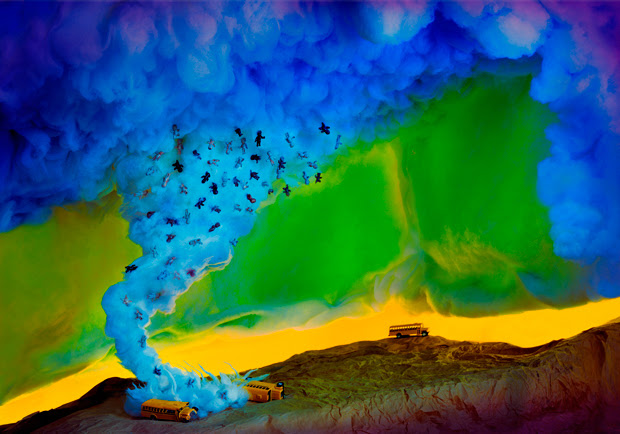 Children in Heavenly Hands: Swirling through this landscape is a hellish image of the many limits on educational and other opportunities for working families who cannot afford to pay for childcare. In Illinois in 2015, stricter income guidelines have slashed the amount a welfare applicant can earn to $10,000 for a family of three. Only 10% of families once considered eligible for subsidized childcare will qualify. Cuts have been called draconian.  The Tree of Knowledge: The tree of knowledge is blasted by the apocalyptic blow back from diminished funding for child care in this landscape. Subsidies to parents for affordable quality care are being slashed and training for child care workers is disappearing. The very foundations of providing for young children have been undermined.  Over the Top: This chilling image symbolizes some of the challenges to both middle- and low-income parents. Stagnating class mobility starts with neighborhoods and towns that are child care “service deserts,” where finding quality, affordable and accessible child care is difficult, with limited openings and long waiting lists.  Living in Destiny: Poverty is socially isolating, leaving few choices and resources. Low income, poor health, inadequate education and family instability are often correlated at the individual and community level. There is nowhere to turn, leaving children stranded between the impossibility of moving up or turning back for support, as depicted in this image.  Little Fish in the Sea: Many services for children in this country are simply a brightly colored illusion, treating kids as if they are disposable, akin to plastic toys. Ill-equipped children must chart a course for their future across a sea of junk, as they do in this image. In an overly commodified culture, we should ask what kind of public spaces and values we want to make available to our children. All images © Barbara Ciurej and Lindsay Lochman / Economic Hardship Reporting Project The post Apocalyptic Photographs Expose the Urgent State of Childcare in America appeared first onFeature Shoot. |
|
Posted: 24 Nov 2015 07:00 AM PST
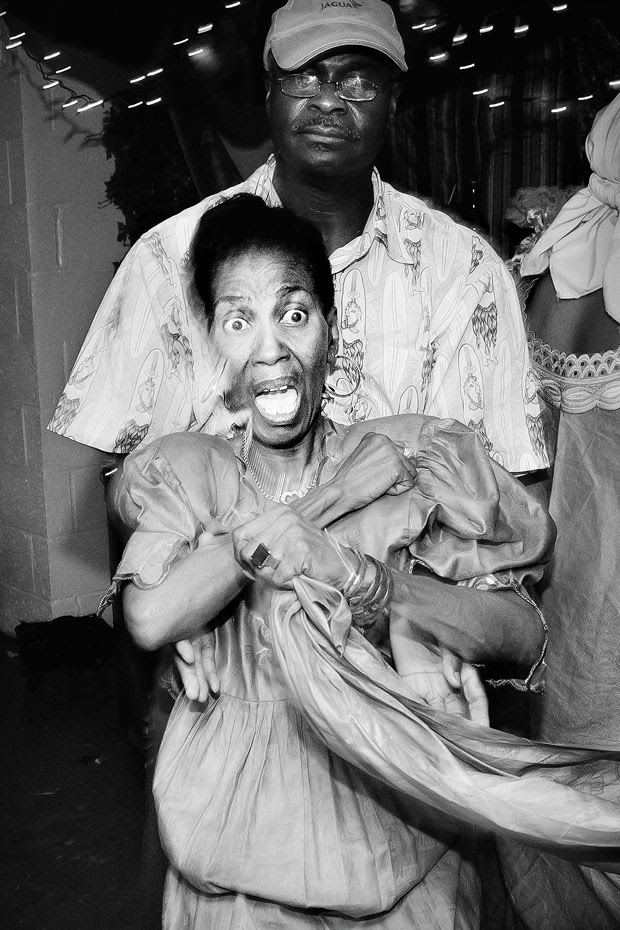 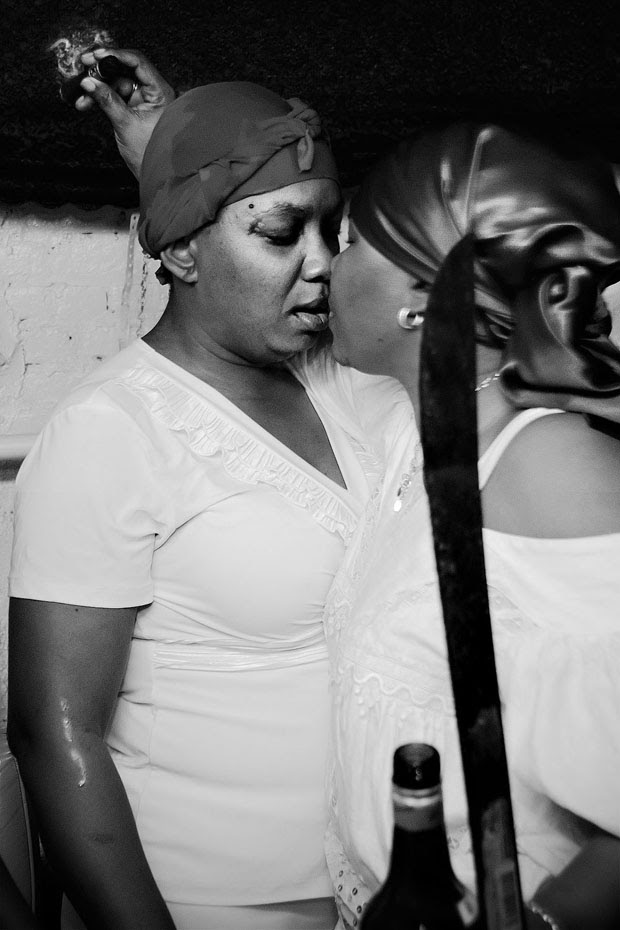 Vodou is a religion deeply embedded in Haitian culture, practiced in Haiti and the Haitian diaspora, but thanks to Western culture ‘voodoo’ is repeatedly misunderstood and spurned as some evil religion in pact with the devil. Brooklyn-based photographer Shannon Taggart – whose work centers on ritual and spirituality – set out to explore for herself modern day Vodou ceremonies. In these fascinating black-and-white images taken in a basement temple in Brooklyn, we witness strange, intoxicating scenes as priests and laymen whirl wide-eyed under the spell of the Vodou gods. The immediacy of the action and the intimacy Taggart has achieved through her images draws us in, making us feel almost as if we were present in the basement with her. The result of Taggart’s careful documentation reveals what the heavily stigmatized religion of Haitian Vodou is like, without the prejudice. We spoke with the photographer to find out more about this project. What first attracted you to Haitian Vodou? “I became fascinated with Haitian Vodou after discovering the work of Maya Deren. I soon wanted to witness Vodou ritual for myself, and see how it differed from other religions that also engage a ‘spirit world’, such as Spiritualism, which I have photographed extensively. I moved to Brooklyn in 2005 and I became aware that there was a Haitian community in my area, but it was difficult to make a connection. In 2008, I met R.A. Waldron, a Houngan (Vodou priest), who I am so thankful to for introducing me to his mentor, Mambo Rose Marie Pierre, a third generation priestess from Haiti. Because of Mambo Rose Marie’s generosity, I was finally able to witness and document authentic Haitian Vodou.”  Why is Vodou so misunderstood, and what is the reality that you experienced in New York? “There are a variety of reasons why Vodou is often misrepresented. My experiences photographing Vodou gave me some insight into why certain practices are misunderstood. For example, machetes, whips, knives, and rope are commonly used in Vodou ritual. These objects, which seem frightening, actually relate to the history of Haitian oppression. Their usage is an effort to take back their symbolic power; much like Christianity did with the cross. Animal sacrifice can also be viewed negatively within our culture, which is now far removed from the realities of farm life. When animals are killed in a ceremony, it is done humanely, and the animals are then used as food. The food made from a sacrificed animal serves as an act of thanks to the Loa (gods or spirits) and as a blessing to those who eat it. Historically, the immediate consumption of animals after a ritual served the additional purpose of ensuring the meat was distributed fresh, and that as many people as possible could share in the eating.”  Can you briefly describe for us what takes place during these ceremonies? “An elaborate altar is built, with a variety of offerings, and a vever symbol is written on the floor, in cornmeal. Both act as the initial invitation for specific Loa (gods or spirits) to come to the ceremony. Devotional songs are sung, the first being to Legba, the Loa of the crossroads, who controls the entryway to the metaphysical world. Dancing begins, and drums are beaten to a specific rhythm for the Loa who is being called upon. When the Loa appears, it is through the act of possession. The analogy used for possession is as if one’s body is being mounted like a horse, with the Loa as the rider. One cannot be man and god at once, so the individual surrenders their ego to the experience. A temporary amnesia is said to take place, and the events that occur remain a mystery to those possessed.” 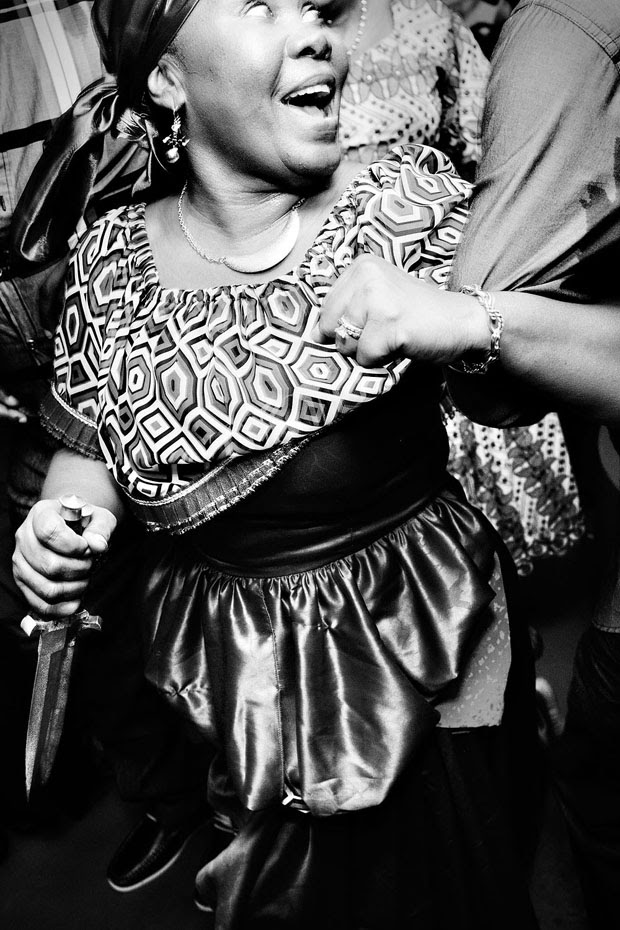 Your images reveal a lot visually about the energy and excitement of the ceremonies, but how would you describe the scenes of possession that you witnessed yourself? Were there any points where you felt uncomfortable? “The temple space is always energized. It is never frightening, but it can be very intense. The feeling of the ceremony can range from light and joyful to dead serious and incredibly frantic. Whatever the tone, there is always a high level of suspense and drama in the air.”  You mention the experience of possession has a temporary amnesic effect on the individual – have the people you photographed seen your images and how did they respond? “Mambo Rose Marie is always surprised, and sometimes shocked, to see my documentation of what has taken place while she was possessed. She will look at me and say, ‘Really? I did this?’ You can view more images from Basement Vodou here.  All images © Shannon Taggart The post Photos Show Strange and Intoxicating Vodou Rituals in Brooklyn appeared first on Feature Shoot. |
|
Posted: 24 Nov 2015 06:43 AM PST
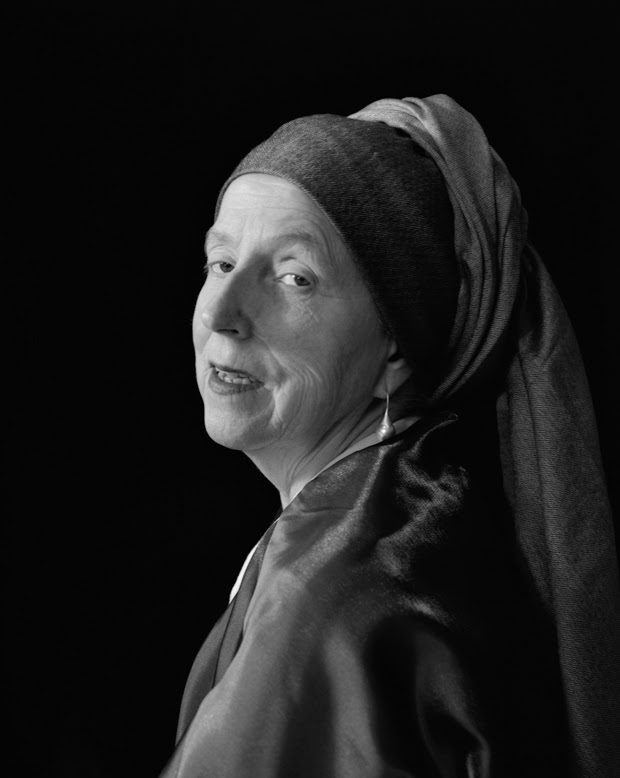 After Vermeer  After Magritte Stages is the title of a self-portrait project by American photographer Laura Hofstadter. After experimenting with a large format camera and discovering a thrill in re-creating classical paintings using simple household props, Hofstadter embarked on this photographic narrative to illustrate the varying transformative stages of life that we pass through universally, as well as those of loss and aging. The project also on a deeper level examines the artist’s own experience battling cancer and the effects the treatment has bestowed upon her body. By personalizing these well-known classical portraits, Hofstadter attempts to breathe new life into these works, and by switching effortlessly between frames she covers some of the most iconic masterpieces in art. With her minimal styling and manipulation, Hofstadter has succeeded in producing a striking and elegant set of self-portraits that conquers the tenuous balance between seriousness and humor. Where did the idea to start this project originate? “The project began as I was experimenting with a new 4×5 view camera. Some of my first pictures were self-portraits that reminded me, by chance, of classical paintings. When I brought some of these early versions into a photography class I was enrolled in, my teacher (Adam Katseff) and some of my classmates, particularly the other women in the class, responded positively and encouraged me to keep going. As I continued, I became intrigued – and then slightly obsessed – with how I could evoke a classical painting using simple props and sets at home. It was challenging, but fun, and so I kept choosing new and personally beloved icons of Western art to place myself into. I was already aware of, and admired, Nina Katchadourian’s project, Lavatory self-portraits in the Flemish style, and I was influenced by the spirit of constraint seen in her work, although obviously I allowed myself much more freedom with props and settings than she did, and in a few cases ended up using locations outside my home or backyard. (I was also aware of Cindy Sherman’sHistory portraits, and of the loosely related work of Yasumasa Morimura, although I don’t feel that this project has as much in common with those antecedents.)” 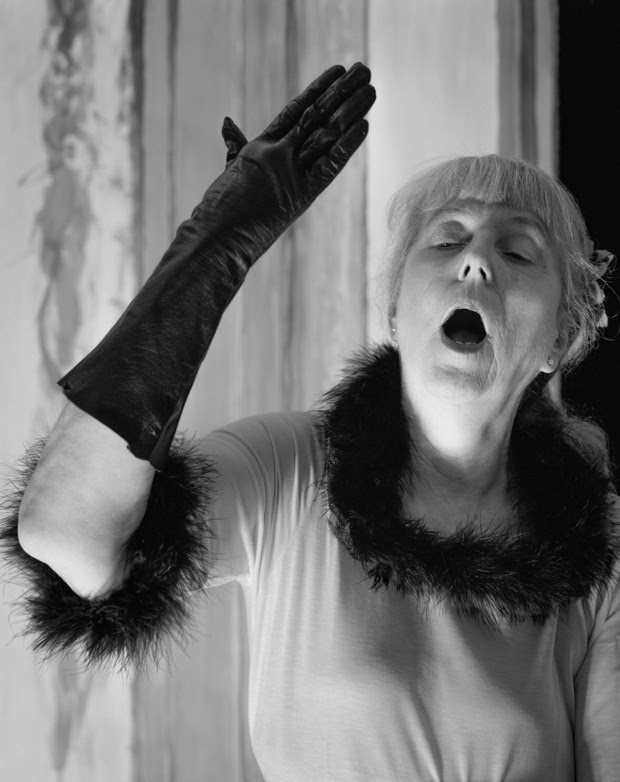 After Degas  After Whistler What were your main intentions behind the project? “As I worked on the project, I realized that I was experiencing a certain kind of liberation as I placed myself into a painting whose original subject was someone entirely different from me, whether it was a young or middle-aged woman, a young boy, or an old man. I began to feel that not only was I asserting my self-worth as a woman growing older in a youth-obsessed society, but I was also creating a loose narrative of my experience facing breast cancer, whose treatment had disfigured my body. My hope is that viewers will confront preconceptions about youth, age, beauty, and body image when looking at these pictures. At the same time, by respectfully personalizing these paintings, I have connected with some long-favorite artworks in an intimate way, and hope to bring some of the less well-known works before new viewers. (For those already familiar with the original paintings, I hope my interpretations cast the traditional works in a new light.)”  After Della Francesca Is there a meaning behind the title Stages? “Yes, there is a double meaning to the title. For me, the series is partly about coming to terms with different stages of life, loss, and aging, so the title refers to those stages of life that we all travel through. But the images are also conceived with a certain degree of humor and playfulness, and much of the hard work in creating these images was theatrical in nature, reminiscent of staging a play. There was the set design and staging in my house or backyard, the ‘costume’ selection from my own existing wardrobe, construction of some props or sewing of a few new pieces of attire, and then working myself into the pose and ‘acting’ the part, with feedback from my husband, Leonard Shar, who was an invaluable collaborator. So creating this portfolio allowed me to put myself on a series of theatrical stages.”  After Leyster Do you have a favorite photo from this series – and if so, why? “It is hard to choose a favorite. Each of the current 16 images in this portfolio is very personal; there is a story behind each one about the props, the location, and the circumstances behind the actual shooting of the picture. Each one is so different, with its own personality and backstory, that it becomes impossible to single out a favorite, like choosing a ‘favorite’ child. I have been gratified and surprised at hearing how viewers respond to the photos, though. For every instance in which someone has told me that they really didn’t think one particular image merited inclusion, someone else has told me that it’s their favorite of the bunch! And a few friends and colleagues have told me that they now think of my black-and-white photograph rather than Vermeer’s original oil when Girl with a Pearl Earring comes up. I find this somewhat shocking, but interesting.”  After Picasso What has been the biggest challenge for you so far while shooting these portraits? “There have been many challenges, but perhaps the most interesting one for me as an ‘artist’ has been how to create my own original pieces of work while so closely emulating a series of masterpieces. Instead of slavishly re-creating each source artwork I have tried to sacrifice features of the original while adding new touches to make an image that is both recognizably the painting and also purely me. I want the viewer to simultaneously have a flash of recognition (or curiosity if they don’t already know the original work) and a sense of disconnect that makes them think about their own preconceptions of beauty or gender. At the same time I hope there is some enjoyment in the experience of viewing these images. I am trying to walk a fine line without falling into pure comical mimicry or alternatively resorting to heavy-handed kitschy imitation or manipulation. I hope I’ve succeeded in maintaining a good balance in the majority of these works!”  After Rembrandt  After Watteau  After Watts All images © Laura Hofstadter The post Casting Herself in the Lead Role, Photographer Recreates Famous Artworks by Degas, Picasso, Rembrandt and More appeared first on Feature Shoot. |
